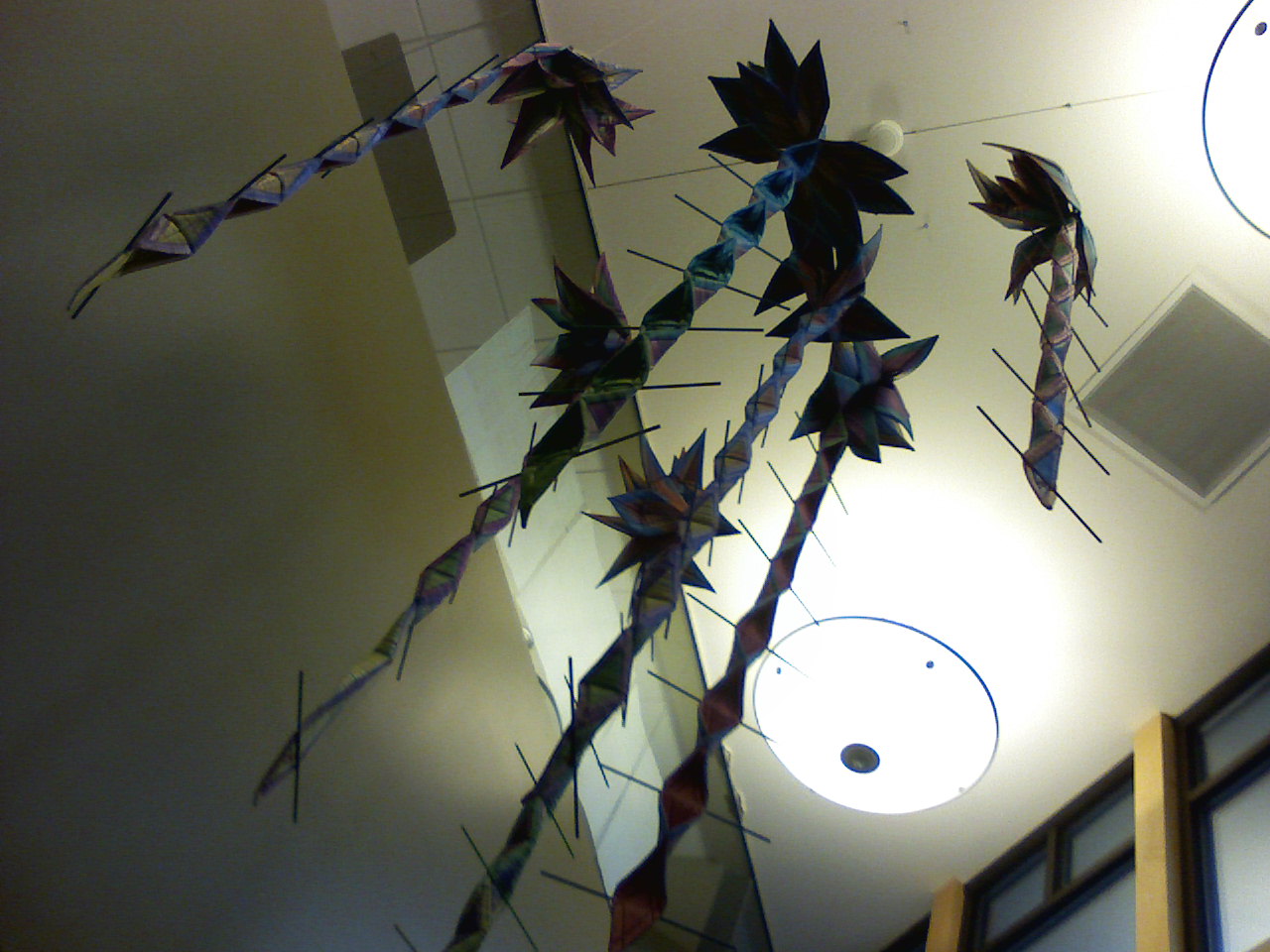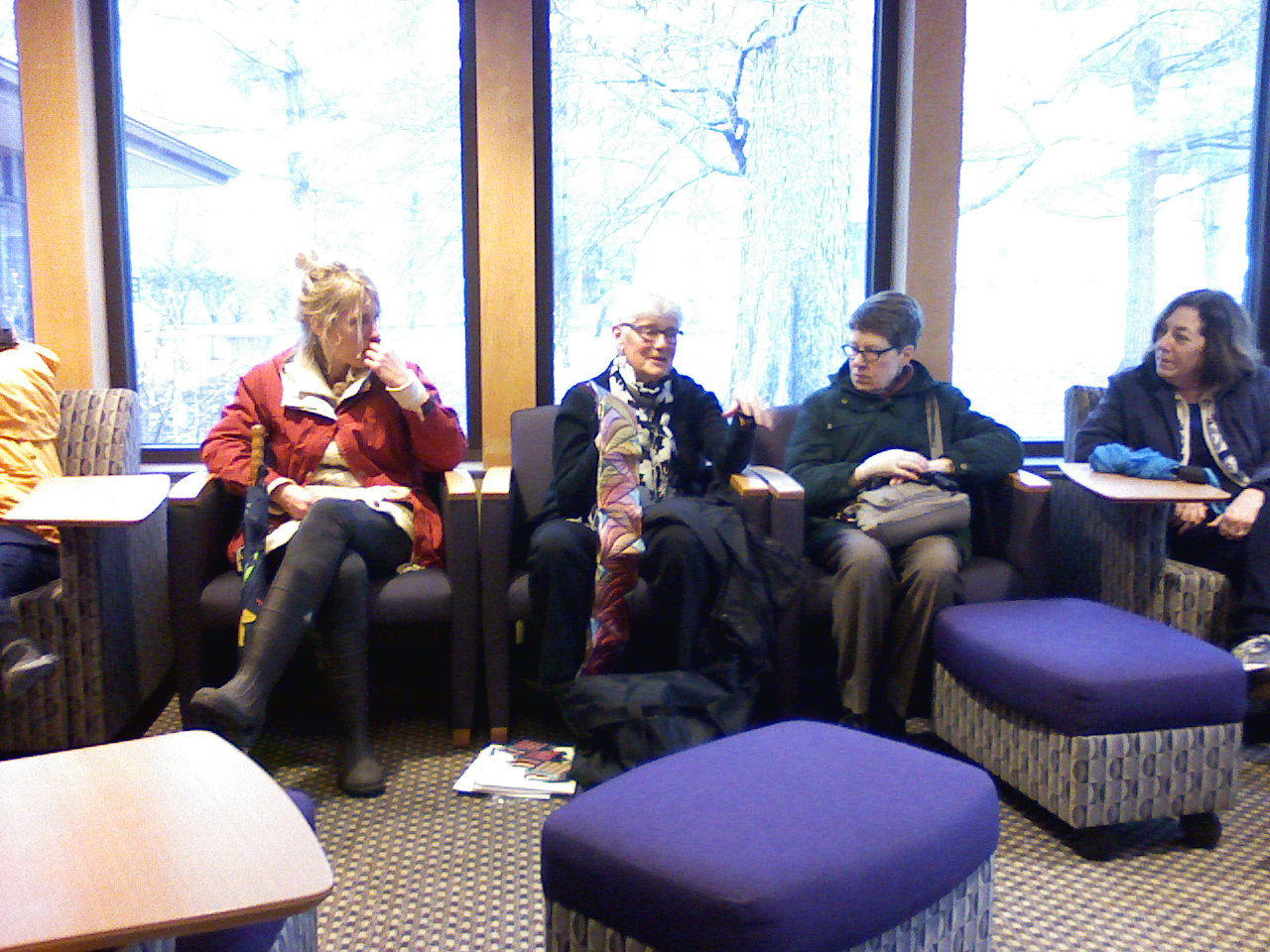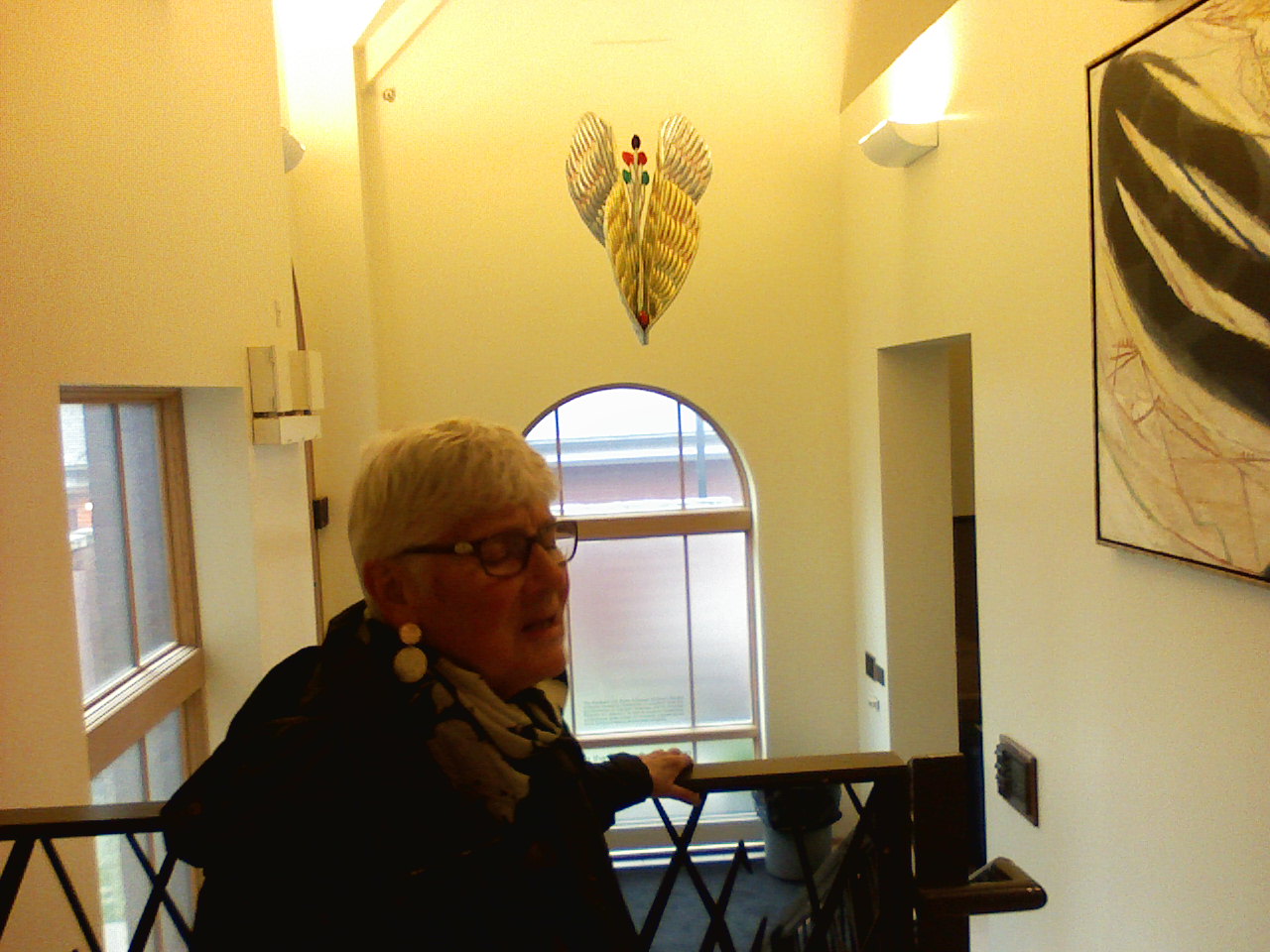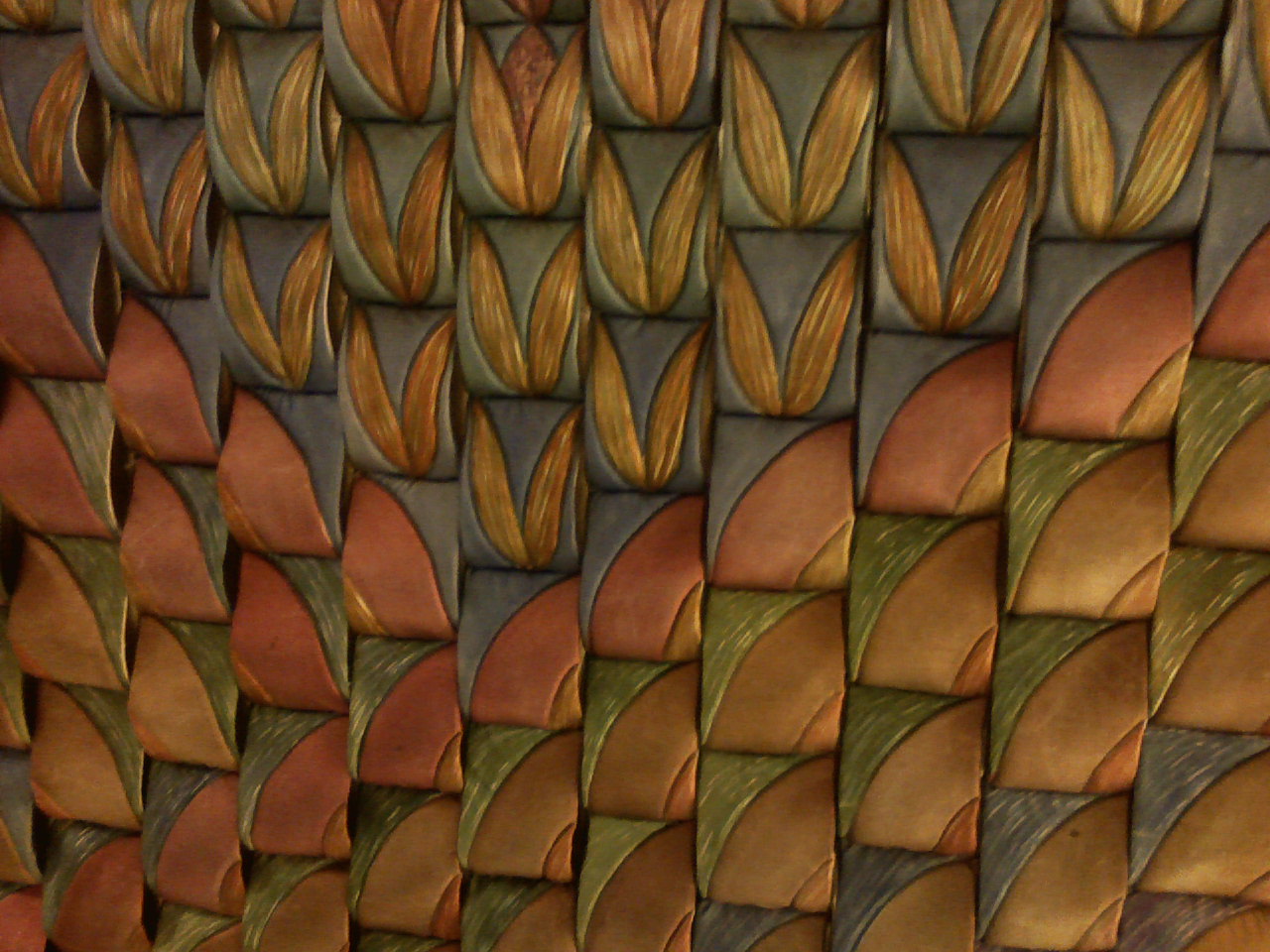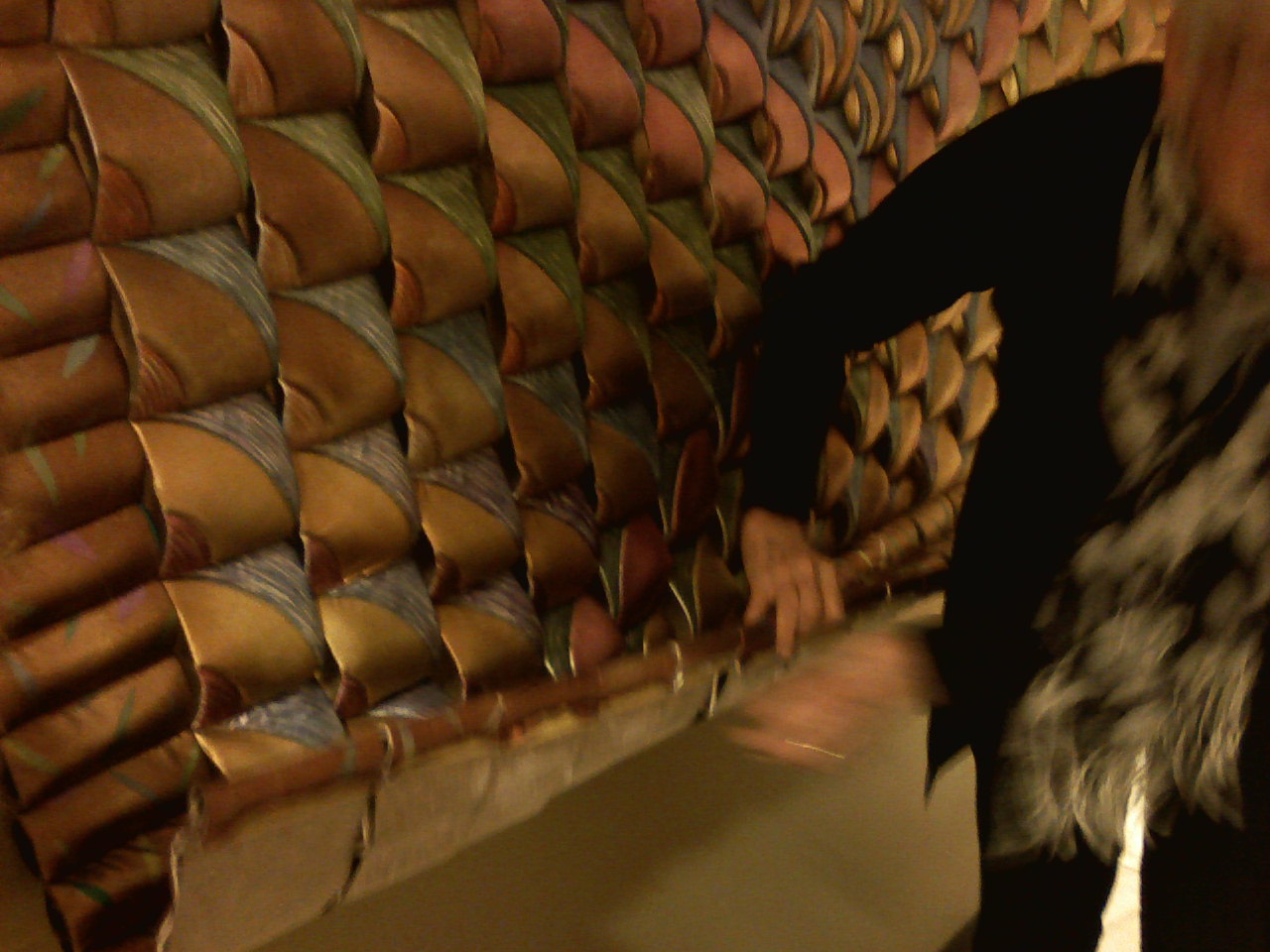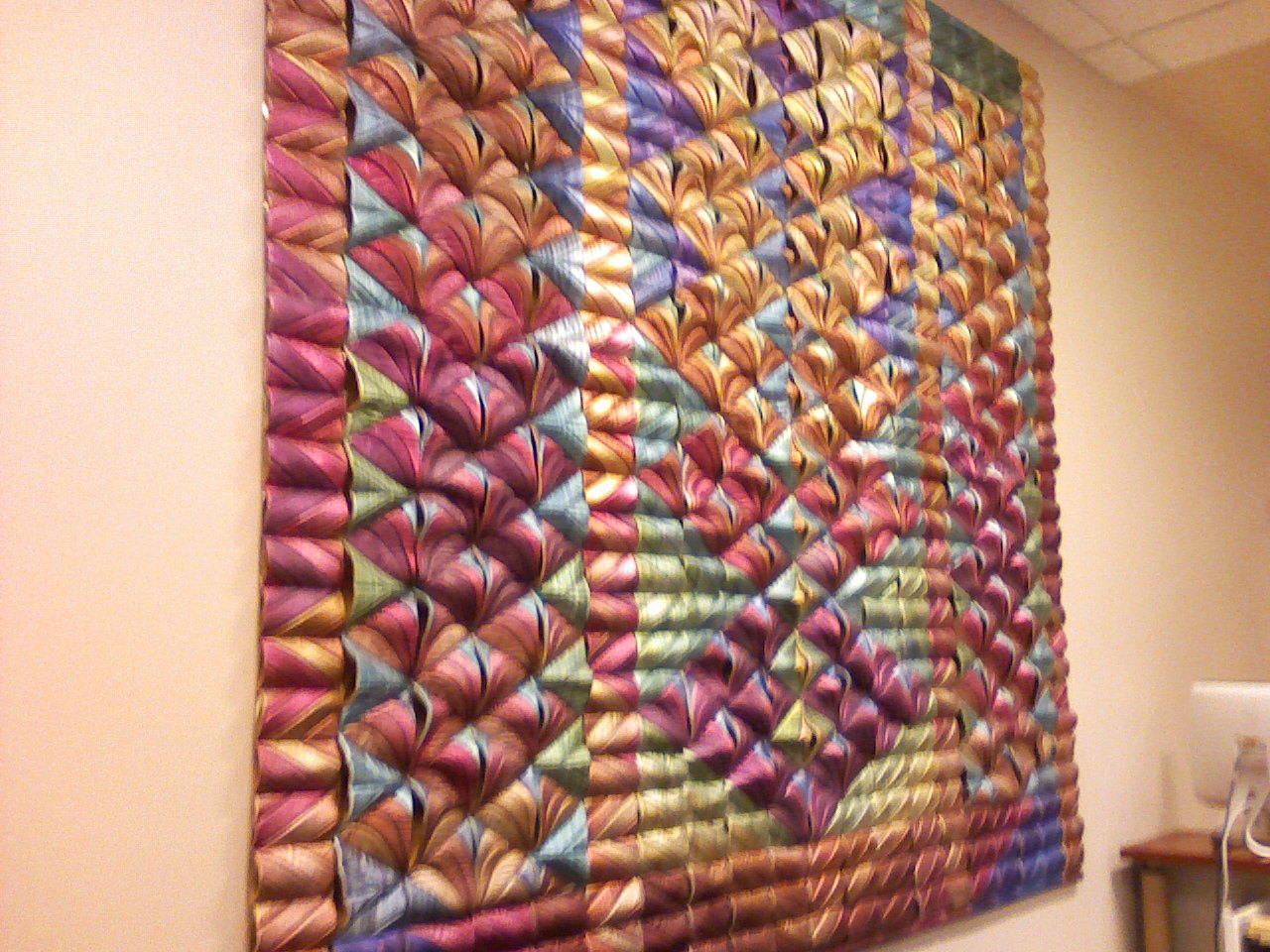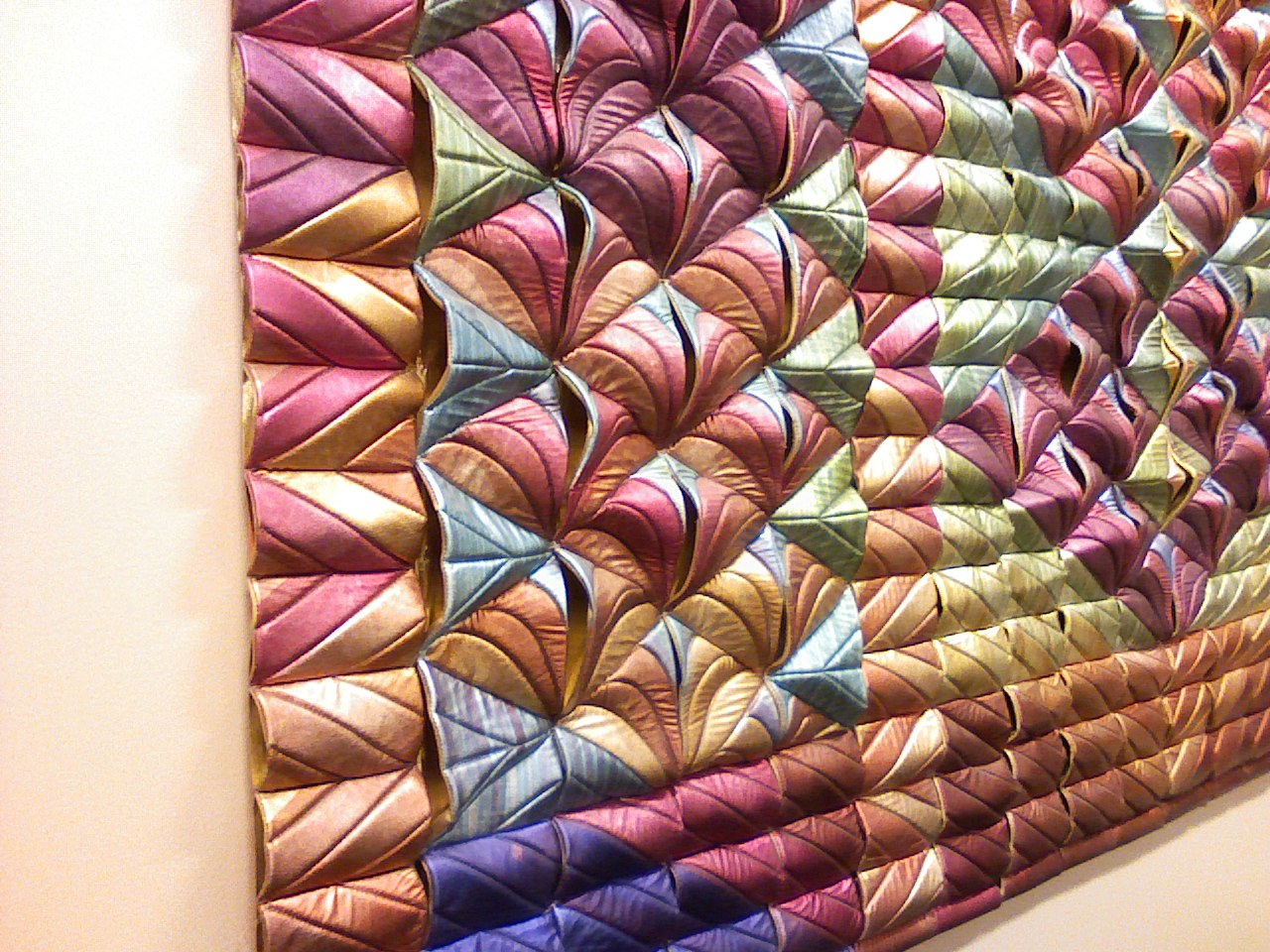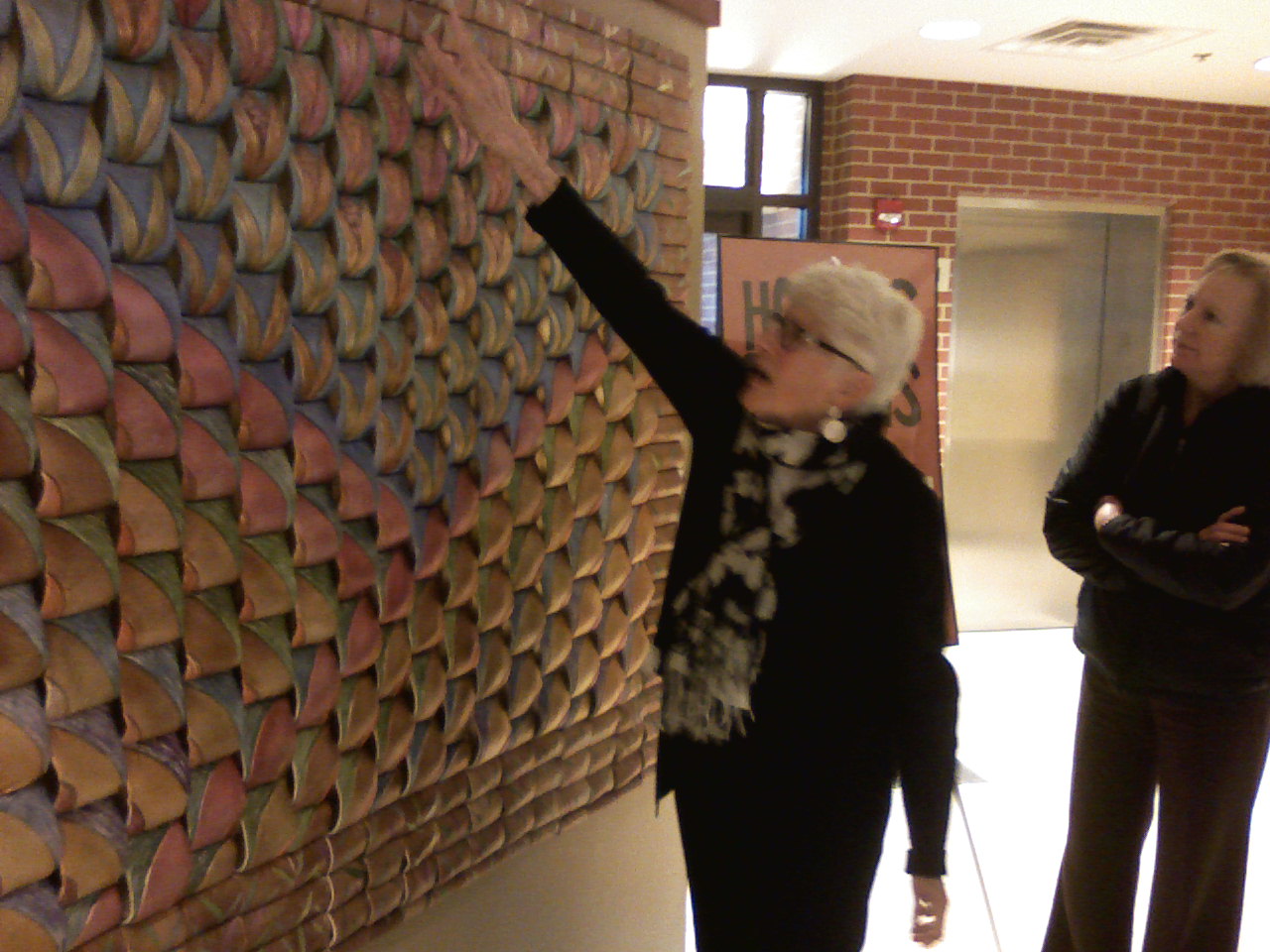
By Laura Stebbins, ThePerryNews Arts and Culture
“Nice to see you again,” said artist Priscilla Sage to her work, “Prairie Meridian,” which hangs in the Gerdin Business Building on the Iowa State University campus.
As part of University Museums’ 40th anniversary events, artists are leading some of the monthly Art Walks, and on April 8 Priscilla Sage led a group on a tour of four of her vibrant and colorful fabric sculptures.
Sitting in the Jischke Honors Building on central campus, Sage discussed her creative process and two of her works on display in the building. She begins by building paper (usually graph paper) models and bending and folding them, she said.
It’s her “favorite thing,” she said, because “I can throw them away.”
After the graph paper models, she builds a paper model out of white butcher paper. Next she moves to creating a white fabric model and finally to building the actual sculpture.
Since one-fourth of an inch can make a difference in how a work fits together, she said, lots of preliminary work is essential.
“Form is the most important part for me,” she said. “I work with geometry a lot.”
Color is the final step in the process, she said, “color, the great seducer.”
When asked about her sewing process, Sage made the attendees laugh when she said, “Boring.” She has five old, black Singer sewing machines that she describes as “tough” and that she keeps in running order. When completing a commissioned work, she always has help with the sewing, she said.
Sage retired from the ISU art department 15 years ago, but she still works four to five hours a day and hinted at a current idea on which she is working.
Sitting below her work “Forest Flora,” she talked about how she’s made 28 pieces so far. Six hang from the ceiling of the Jischke Honors Building. Sticks protrude from the work, and her intent was that they would hang where people could walk through them, bump into the rods and “activate them.”
Sage recalled going to camp in the forests of Pennsylvania and seeing how the rain made mosses come to life. She said it was a magical life for a child. She continues to live among the trees at her home in Northern Minnesota, where she picks berries and comments on the “wonderful things to see when you’re down on the forest floor.”
The second piece she discussed was “Knoll Garden,” a commissioned piece that originally hung in the Knoll (residence of the ISU President) and was designed to hang on a curved wall. It now hangs inside the Jischke Honors Building on a flat wall. It was moved from the Knoll to the Jischke Honors Building as one of the inaugural art works in the new site.
From the late 1970s to the late ’90s, Sage worked with a silver fabric and dispersed dyes, a technique she used with “Knoll Garden.” The technique involves first using a brush to paint the color onto white paper and then heat-transferring the color to fabric. Since the color does not look the same on paper as it does on the fabric, it’s a process that takes a lot of experimentation to perfect, she said, and Sage appears to have perfected her technique.
She said her “ideas come from within me and a lot of drawing.” She lived in Iowa for 53 years and feels that “Knoll Garden” is very much an Iowa piece heavily influenced by both flower gardens and the Iowa landscape. She doesn’t mind if you see trees or corn or whatever in “Knoll Garden,” because she purposefully and ambiguously titles her pieces so as not to say “this is a tree” or “this is a house.”
Her work “Prairie Meridian” in the Dean’s Suite of the Gerdin Business Building was the piece she spoke to: “Nice to see you again.” Sage said creation is a continuous process for her once the work begins. She does not put it down and come back to it later but works continuously.
The final piece on the tour, “Golden Flight III,” hangs and twists in Morrill Hall and is Sage’s oldest piece on campus. She felt that it was one of her culminating pieces that year.
“Color comes from what I feel,” she said. “It’s very subjective.” Sage said it takes a lot of experimenting to get the colors to balance and to work, but balance and work they do in all her pieces.
When I asked about her work “Golden Rhapsody” (commissioned by Frank and Grace Moore in memory of Ruth M. Wise) in the Perry Public Library, she recalled it fondly and said that it was created specifically for that space. She enjoys being able to create a work for a specific space, and when doing so she has an architect create small models of the space that she can then place her paper models into them during her design phase.
After previously sharing some horror stories about what happened to some of her commissions, such as one that was lost and another stuffed into a garbage bag, she said, “It’s not in a garbage bag.”
I assured her that her piece still hung in the space for which it was designed and was a beautiful welcome to all who enter the Perry Public Library.
It’s fitting that her work is on view in a building frequented by children since Sage had said earlier, “Kids have always been my best audience. Thank goodness for them.”
Thank goodness for them and for Priscilla Sage.









